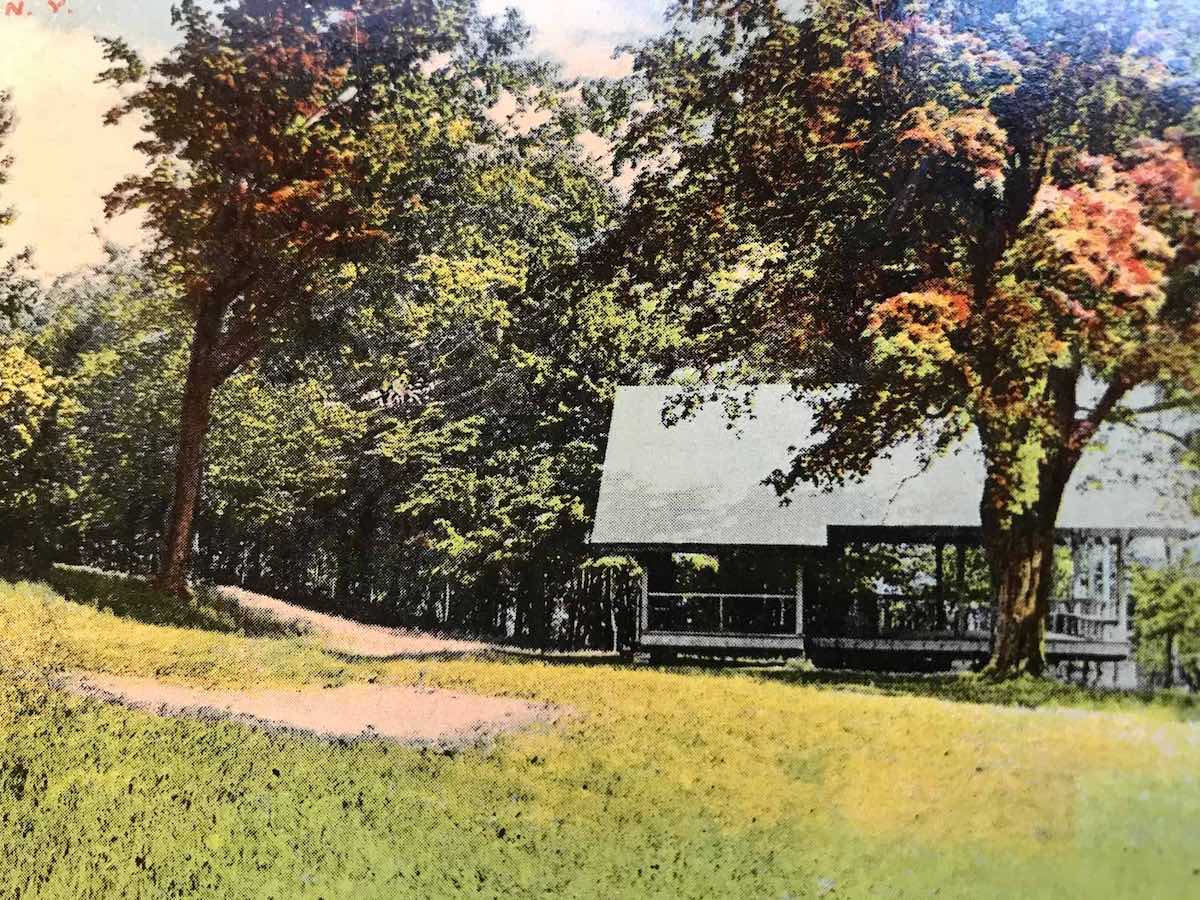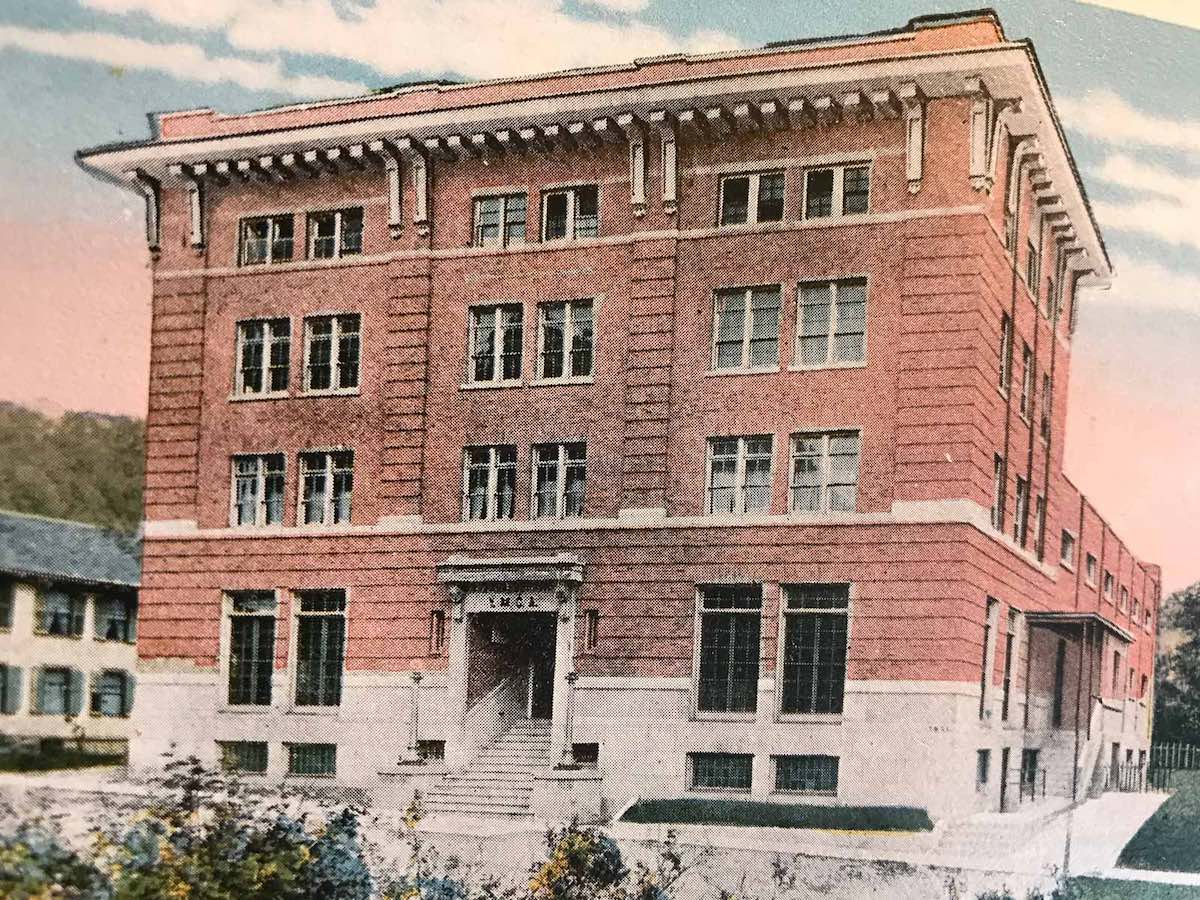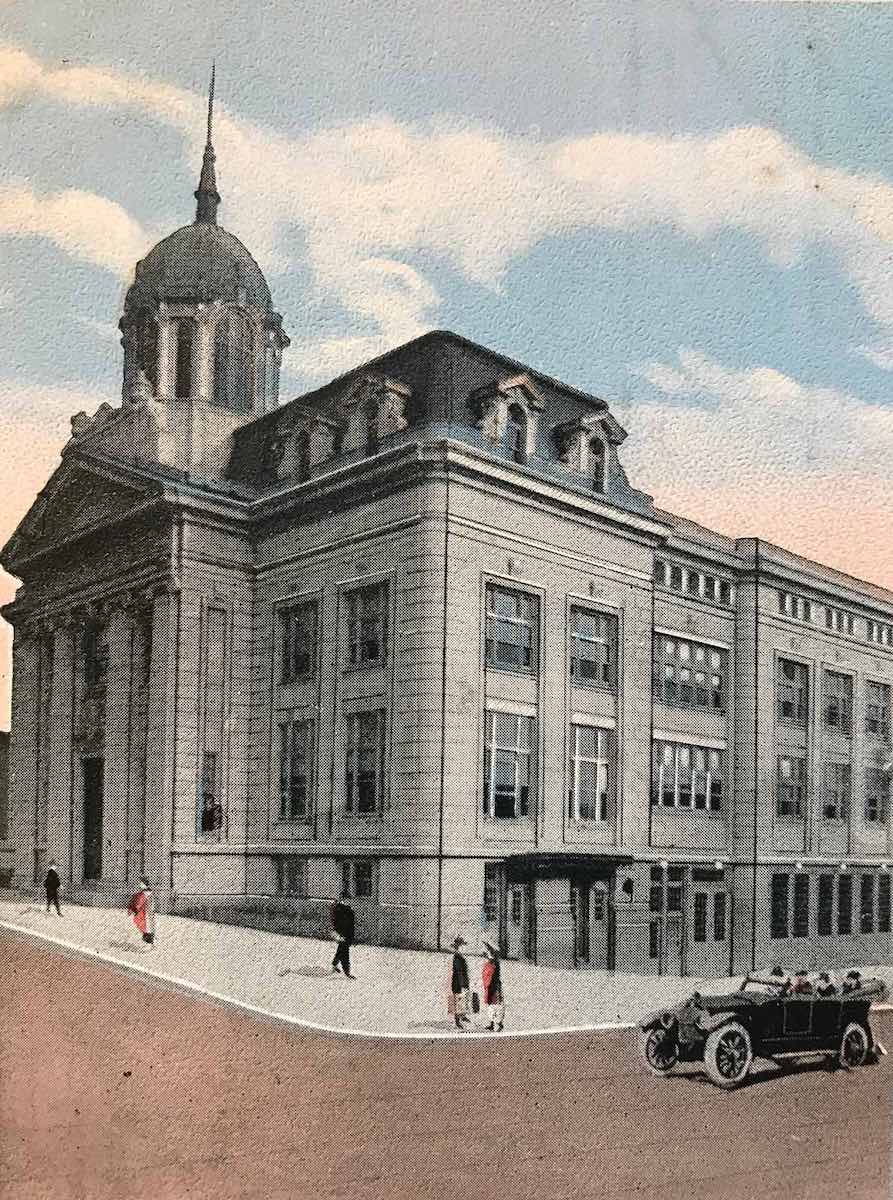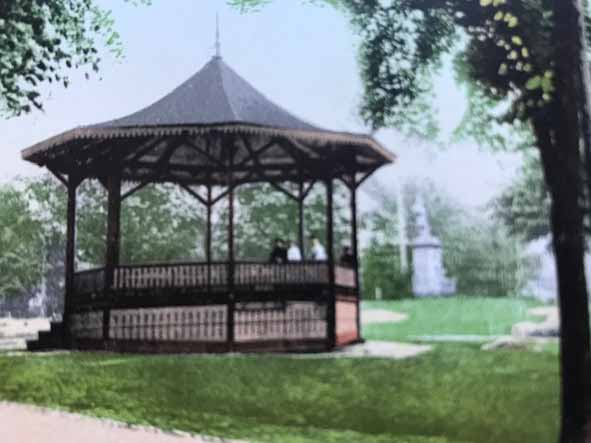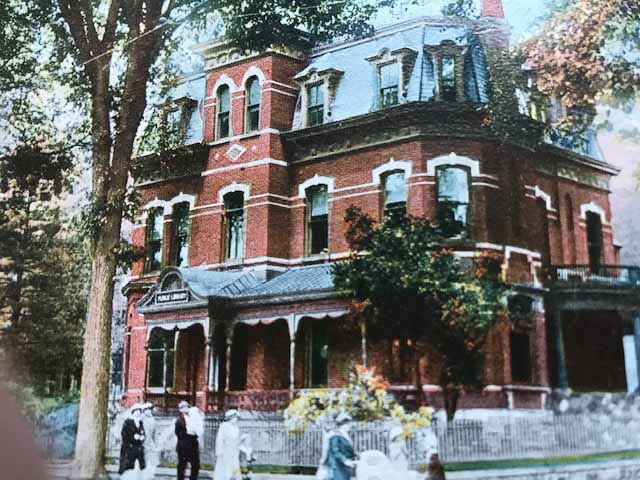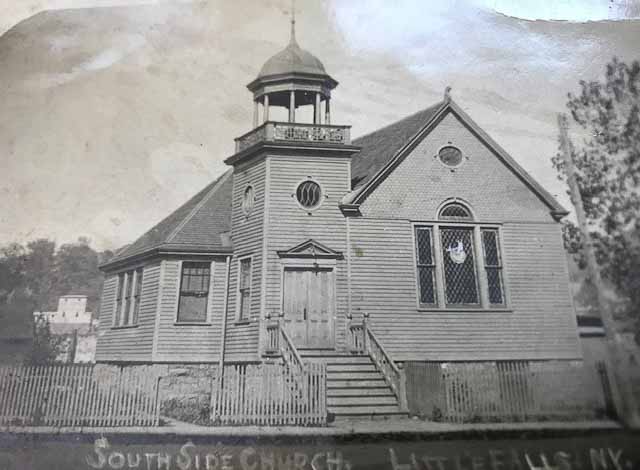Little Falls Philanthropy by Louis W. Baum
Introduction
What did wealthy people do with their money? Some spent lavishly on themselves and their families caring little for their fellow man; others were philanthropic. Over the years, the citizens of Little Falls have greatly benefited in many different ways from the philanthropy of several of its leading residents who lived here in the late 1800s and early 1900s. When we visit City Hall, attend an event at the WCA, work out at the Youth and Family Center (formerly the YMCA), shop at the Co-Op, attend a game at Vets field, or enjoy several of our beautiful parks, we should say “Thank You” to those benefactors who made them possible.
The word philanthropy comes from the Ancient Greek philanthropia or ‘love of humanity.’ Andrew Carnegie was the most prominent leader of philanthropy on a national scale. During his lifetime, Carnegie gave millions to build 3,000 libraries in 47 states and in total gave away $350 million or 90% of his fortune. Other notable early philanthropists were John D. Rockefeller and, Edsel and Henry Ford. More recent contributors to charitable causes have been Bill and Amanda Gates and Warren Buffett who have donated tens of billions of dollars to help eradicate various diseases and fight poverty throughout the world.
Sources of Wealth
The Indian Deed of 1722 and the Burnetsfield Patent of 1725 opened land for farming in the upper Mohawk River Valley to Palatine German settlers around the “little falls.” The Palatines also provided a barrier between the sometimes hostile Iroquois Indians and the English and Dutch in Albany. The land was quite fertile, and the rapids provided a source for waterpower. The 44 foot drop in the river necessitated first, the Western Inland Land Navigation Canal (1795), and later the larger Erie Canal (1825) to get boats carrying people and product around the rapids. Initially, the water rights were controlled by a monopoly, however an 1831 court ruling opened them up to the public. A vibrant community, Little Falls, sprung up and the harnessing of the waterpower hastened its industrial and commercial growth and brought visionaries and entrepreneurs and money to the area.
These people invested their money, built factories and mills along or near the river during a period of rapid industrialization in the Mohawk Valley and throughout the country. In many cases their optimism and daring brought them great wealth.
Another reason for the accumulation of a great amount of personal wealth was the lack of, or a low minimal personal Federal income tax. It wasn’t until 1913, with the ratification of the 16th amendment, that the Federal income tax as we know it, kicked in at 1% for an income up to $20,000 ($590,000 in 2022) with a maximum of 7% for incomes exceeding $700,000 ($21 million in 2022). Keep in mind, at that time, 1913, the average laborer in Little Falls earned about $1,000 per year ($29,500 in 2022) for a 60 hour work week.
Little Falls’ Philanthropists and What they Did
David Hamlin Burrell & Family
David Hamlin Burrell’s grandfather, Jonathan Burrell, moved his young family from Massachusetts to Salisbury around 1801 where he became involved in the dairy industry, mainly in the manufacture of cheese. David’s father, Harry Burrell, moved to Little Falls and became wealthy as a cheese and butter buyer in New York and foreign markets. Harry sent young David to England to find out why English Cheese was so much better than that made in America. David found that a high quality starting product (milk) was necessary as well as a rigidly defined manufacturing process – time, uniform temperature control, sanitation and controlled aging. Being an inventor at heart (he invented the oil burner as we know it), by the late 1800s, David took the cheese making industry to a new level, making Herkimer County cheese world famous, and Little Falls the greatest cheese market in the country, if not the world. And he made lots of money doing it!
He was aptly described by his contemporaries as being an artisan, inventor, business innovator, manufacturer, entrepreneur, capitalist, philanthropist, reformer, scholar, and Christian worker. Most would agree with this assessment.
David had a lavish lifestyle, building his Overlook Mansion in 1890 on the hills above the city, fulfilling a promise he had made to himself as a young boy sitting on the same hills. The mansion was complete with tennis courts, an indoor swimming pool and bowling alleys, large greenhouses for growing exotic flowers and plants, homes for his servants, and even a large dairy farm and bottling plant to test out his theories. Yet, David Hamlin Burrell was the greatest philanthropist in the history of Little Falls, and his children Loomis, David Jr., Elizabeth, and Anne Louise followed their father’s lead.
- 1881 David Burrell’s company, Whitman & Burrell, purchased the Presbyterian Church at the corner of Albany and South Ann Streets to expand their factory and offices. David Hamlin Burrell was the major benefactor in building a new church for the congregation at the corner of Jackson and East Lansing Streets using native stone in the construction.
- 1
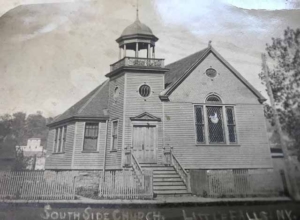
South Side Church
902 David Hamlin Burrell built a non-denominational church, the Bethel Mission Church on the South Side for the residents of that area and brought in a missionary, Dr. J. L. Humphry, from India as pastor.
- 1904 Burrell believed that his prosperity was, in part, a result of the efforts of his workers, and occasionally would include a check for a nice sum in their pay envelope in addition to their regular wages.
- 1910 Burrell donated $50,000 ($1.54 million in 2022) toward the construction of a new YMCA facility on Jackson Street which opened in 1913.
-
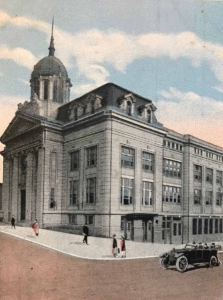
Little Falls City Hall
1914 Voters approved a new $105,000 City Hall and David Hamlin Burrell pledged $60,000 ($1.85 million in 2022) for its construction.
- 1917 At his own cost, Burrell built the multi-story “Burrell Building” at the northeast corner of Main and Ann Streets. The National Herkimer County Bank moved from the old 1833 building on South Ann Street to the new facility and changed its name to Herkimer County Trust Company. There were over thirty offices available in the new building for Little Falls professionals.
- 1918 A proposal was made to the New York Central Railroad, based on designs by David Hamlin Burrell, for two subways, one overhead pedestrian crossing, and one automobile crossing across the NYCRR tracks. This would alleviate the large number of deaths and injuries caused by individuals and vehicles hit by trains while crossing the tracks. The project was completed in 1938.
- 1919 David Hamlin Burrell died at his home, Overlook Mansion
- 1920 Loomis, David Jr., and Elizabeth Burrell, children of David Hamlin Burrell Sr., gave the 1828 Nathaniel Benton House on Garden Street and $12,000 for renovations ($175,000 in 2022) to the city for a Women’s Christian Association (WCA) as a memorial to their deceased sister, Anne Louise Burrell. The renovated building opened in November 1920.
- 1923 Mrs. David H. Burrell Sr. erected a home for nurses on Whited Street next to the Little Falls Hospital. Mrs. Burrell passed away in 1924 before the project was completed.
- 1927 Burrell family members contributed a major portion of the cost of purchasing property and equipping and conditioning the new recreation park on West Monroe Street, near Sherman and Burch Streets. The family members contributed $10,000 ($158,000 in 2022) or 60% of the money collected.
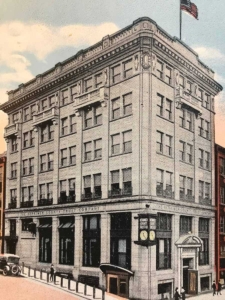
Burrell Building
Dudley Burwell

Moreland Park
Dudley Burwell was born in Norway, New York in 1800, was educated at the Fairfield Academy and settled in Little Falls in the 1820s. He was a director of the Herkimer County Bank in the 1833 building and in its early days, he, along with Albert Story, took home the daily receipts in a bushel basket for safekeeping. He was a prominent attorney, and very active in community organizations and affairs. He was married, but his young wife passed away less than a year after their marriage. He never married again. His first act of generosity was the donation of the bell for the Little Falls Academy in 1844, the first large structure devoted to higher education in the village. The building was on the site of the present Benton Hall Academy. When Dudley died on August 18, 1876, he had created a trust fund in his will that was to be administered by his friend William G. Milligan, Trustee. Upon Milligan’s death on February 3, 1904, the Dudley Burwell Trust Fund of $17,000 ($560,000 in 2022) was turned over to the city for the care and maintenance of Moreland Park, a place where Burwell had lived the last years of his life. The 30-acre park of lawns and woods is situated on a hillside with a magnificent view of the city, Mohawk River, and Erie Canal. Dudley Burwell was buried on a knoll overlooking his beloved park.
After major renovations had been made, Mayor Timothy Dasey dedicated the park during the city’s centennial celebration in 1911. Burwell Street in the eastern part of Little Falls was named in his honor.
Samuel S. Dale
In 1831, Thomas Dale left his home in Ireland for Canada, and in 1834 moved to Little Falls to join his father who had immigrated to America years earlier. He and his wife, Fanny, a Little Falls native, had three sons William H. (1842), George B. (1845), and Samuel S. (1859). The two oldest sons joined with Thomas to form a construction company around 1858 that built many of the finest homes in the city, as well as several factories along the river and business blocks along Main Street. Thomas died in 1877. William and George continued the business as Thomas Dale’s Sons and their crowning achievement was the building of St. Mary’s Church which was known as “The Cathedral of the West.” Their uncle, also named William, built the 1833 old bank building, now the home to the Little Falls Historical Society.
Samuel, nearly two decades younger than his brothers, was born in Little Falls in 1859. He embarked on a different career path. At age sixteen he learned the woolen textile trade at the Mohawk Mill in Little Falls. He moved to New England and spent twenty-five years as an executive in the woolen and worsted mills industry. Samuel Dale became a prominent authority on wool, and wrote extensively on that commodity, as well as editing magazines concerning the business. He was a vigorous opponent of the metric system and wrote and lectured nationally against the claim that the adoption of the metric system was necessary in the interest of export trade.
Samuel and his wife were childless; however, his wife devoted herself to aiding children and the elderly in Boston who could not afford medical care. Charlotte Dale died in 1929 and was buried in the Dale family plot in Church Street Cemetery. Samuel died in Brookline, Massachusetts in August 1940 and was also buried in the family plot in Little Falls.
In October 1947, a copy of his will was received by the Herkimer County Attorney revealing the establishment of a “Dale Memorial Trust” for needy children, under the age of 14, and aged who are over the age of 65, and residents of Little Falls, New York. The “Dale Memorial” was to be in memory of his father, mother, and wife; Thomas, Fanny, and Charlotte Dale “to whose love and devotion I owe all the good that has come to me.” His intent was to continue his wife’s work of assisting children and elderly in need. In the 1990s, after his last beneficiaries had passed away, the trust was modernized under Massachusetts law and the “Dale Trust” as we know it began to function.
The Dale Trust has given away approximately $50,000 a year since 1999 to children under 14 and people over 65 who are residents of Little Falls to help pay for medical bills not covered by their health insurance. Also, many non-profit organizations have received grants from the Dale Trust including Little Falls Hospital, the former Little Falls YMCA, Little Falls Food Pantry, Community Outreach, Little Falls Pop Warner, Little Falls Library, Mohawk Valley Center for the Arts, Little Falls Elementary and Middle Schools, and project Linus, to name a few.
The co-trustee of the “Dale Trust” is the Bank of America, Boston. A female co-trustee of the Dale Trust and her committee, all residents of Little Falls, recommend Dale Trust applications to the Bank of America for disbursement of funds. Dale was quite insistent that beside a corporate co-trustee that there be a female co-trustee of the Dale Trust who is a resident of Little Falls.
Dale would be proud and quite pleased that his trust keeps on giving back to the community on a yearly basis. The Samuel S. Dale papers are a part of the archival collections in the Columbia University Libraries.
Rollin H. Smith and George L. Smith
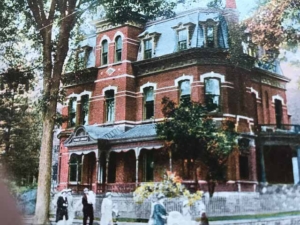
Little Falls Public Library
Rollin Hulbert Smith and George Leonard Smith, both life-long Little Falls residents, were not related, yet both were prominent citizens and major benefactors in the establishment of the Little Falls Public Library as we know it today.
Franklin Bramer, a manufacturer of agricultural equipment in Fabius, New York, moved to Little Falls in 1868 and established the Warrior Mower Company. Bramer built his family residence in the style of “Second Empire” architecture at 10 Waverly Place, a beautiful Victorian house that would eventually become the home of the Little Falls Public Library. The first telephone in Little Falls was installed there in 1878.
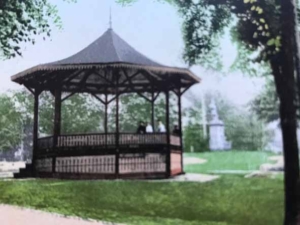
Bandstand Eastern Park (Ward Square)
Bramer’s daughter, Nellie, who had married Judge Rollin H. Smith inherited the home. Judge Smith, born in Little Falls in 1828, was admitted to the bar in 1863 and had a successful career on the bench. In 1877, he collected the necessary funds for building a bandstand in Eastern Park (Ward Square.)
After Rollin’s and Nellie’s passing, the stately home was bequeathed to the city in 1910 to be used as a library. Rollin also left $12,000 ($375,000 in 2022) that could only be used for maintenance and alterations to modify the building from a family home to that of a library. Additionally, he donated his personal library, the home’s furnishings, and his collections of art, porcelain figurines, and china. His will stipulated that the front parlor and reading room were to remain the same forever, which they have. No money from his estate could be used for wages for library staff. The library opened in the renovated Bramer/Rollin Smith home on January 1, 1912.
George Smith was born in Little Falls in 1864, about a generation after Rollin Smith. He traveled the country seeking his fortune but returned to Little Falls in 1887. Together with his father, they purchased Moss Island and built a splendid stone mill for the wool shoddy business. The Adirondack Wool Company grew and became quite prosperous, and George Smith and his wife, Inez, became influential citizens in the community. They built their home on the corner of Garden Street and Waverly Place, a few doors away from the library. George Smith died on April 25, 1946, and upon his wife’s death in 1960 the bulk of the estate of $425,000 ($4,300,000 in 2022) was left to the Little Falls Public Library with the money to be managed by the trust department of the Herkimer County Trust Company. As in the case for Rollin Smith, the money could only be used for maintenance, expenses for book purchases, building renovation and expansion etc. Again, none of the money could be used for staff wages. A portion of these funds was used in 1982 when a two-story addition was completed, blending with the original architecture of the Bramer House. In 1998, the public within the Little Falls Central School District approved a resolution giving the library $55,000 funding for library salaries with the amount increasing modestly in ensuing years.
Burrows Family
The Hoffman Paper Company on West Main Street in Little Falls failed in 1913 and Charles Burrows of Skaneateles took over management of the company, newly formed as the Mohawk Valley Paper Company. In 1920, together with his brother, Andrew, he formed the Burrows Paper Company which grew and prospered under Andrew’s management. After the death of Andrew in 1949, his son, Ralph became president of the firm and added three additional mills in New York and Mississippi to the company. Years later, Ralph’s son, Bill, expanded the company further with new product lines and by acquiring plants in Ohio, Iowa, and Nevada as well as in The Netherlands and China. Following Bill’s death, the Little Falls operation was sold in 2016 to Twin Rivers Paper Company, a division of Novolex.
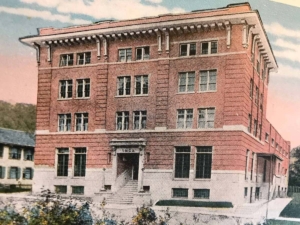
YMCA
The philanthropic 501(c)(3) non-profit “Burrows Foundation”, founded in 1990, is a separate private entity headquartered in Little Falls with the purpose of giving to education, community services, health and hospitals, and youth services. Over the last decade, the fund has had assets of between $3 million and $5 million with annual disbursements around $200,000. Most of the money is given to organizations within New York State, with a good share of the money being distributed in Little Falls along with smaller amounts in other valley communities. Little Falls recipients include Youth and Family Center (formerly YMCA), Little Falls Hospital, Community Chest, Community Outreach, Mohawk Valley Center for the Arts, Mohawk Valley Choral Society, Little Falls Public Library, Little Falls High School clubs, Little Falls Historical Society, Rotary Club, Christmas in Little Falls, and Little Falls Canal Days. Recipients outside the area are mainly health-care related and educational facilities. The on-going generosity of the Burrows Foundation has improved the quality of life in Little Falls in many ways.
Robert MacKinnon
Robert MacKinnon came to Little Falls in 1881 and operated a small knitting mill with two partners. He struck off by himself in 1887 and over a three-year period built two mills along South Second and East Mill streets, including the multi-story brick MacKinnon Mill complete with a watch tower. He was known for his flamboyant behavior and sometimes paid his employees in gold. He then went on to build what would later become the Allegro building on the southwest corner of South Ann and West Mill streets. His mills, employing between one and two thousand workers, were state-of-the-art with good lighting and automatic sprinklers. He went to great lengths to attend to his employees. After a severe blizzard in 1902, that closed most of the roads, he sent out teams of horses to bring in female workers who lived in the countryside who were unable to get to work in Little Falls. At the end of the day, he provided them with dinner and returned them their homes.
To celebrate the completion of his new factory, in November 1900, MacKinnon hosted a large charity ball at his new mill which was attended by hundreds of his employees and local citizens. The event raised thousands of dollars for the Little Falls Hospital. All expenses for this elaborate social event, featuring Rath’s orchestra from Utica and a sumptuous dinner, were paid for by the mill owner Robert MacKinnon.
MacKinnon was a rich man and on top of the world; however, in September 1910 he failed, and his mills closed. He entered bankruptcy for $1.9 million dollars, according to the New York Times, partially through poor investments in Mexican bonds. He died a poor man in Little Falls in 1922, having worked at one time in a local shirtwaist company earning $25 a week. His former knitting goods company, then named the Phoenix Knitting Mill, moved to South Carolina in 1928.
Dennis Collins
Born in County Cork, Ireland, four year-old Dennis Collins immigrated to America and Little Falls in 1848 with his parents and three siblings. Thrust into the workforce at age fifteen to aid his widowed mother, in 1859 he took his first job as a clerk in the grocery store of W. C. Southworth at the corner of South Ann and Mill streets. Six years later, at the large firm of Bennett Brothers, he learned accounting and the intricacies of running a business. In 1866 he was elected Village Collector, the first Republican elected to a municipal office in Little Falls.
Using the fees from his elective office, Collins opened his own grocery business at 600 East Main Street, a business that grew and prospered to become the largest grocery store in the village. He was in business at that location for well over forty years, and in later years incorporated his sons James and Edward into the business as Dennis Collins & Sons. He owned several business blocks in the city in addition to a number of tenement houses. He was also a stockholder and a director of the National Bank of Herkimer County.
Dennis Collins philanthropy was mainly directed toward his religion, Catholicism, and his church, Saint Mary’s of Little Falls. He was the largest individual donor to the general funds and most liberal buyer of tickets for fairs, festivals and other functions. Many of the major furnishings in the church were donated by Dennis and his wife Margaret, and after their passing by their six children.
- The largest of fourteen bells in the chime, Meneely Bell Company, Troy, New York
- Main Altar (1900), Finest Italian marble and Mexican onyx
- Convent Chapel Altar (1903), Same materials
- St. Mary’s side Altar (1905), Same materials
- St. Joseph’s side Altar (1906), Same materials
- 2 Stained Glass Windows (3’ x 15’), John Hardman Company, Birmingham, England
- Monuments in cemetery for deceased parish priests and nuns
- Statues of saints inside church
At the time of his passing in 1909, Dennis Collins was the oldest merchant in the city. Before he passed, he drew from memory a drawing of the first Catholic church in Little Falls, a wood frame building, which had been built in 1847 and destroyed by fire in 1866.
Reflections
Americans are among the most generous people on earth. The “Big Money” donors get most of the publicity, however donations from the common man and common woman add up to billions of dollars for needy causes across the nation. It might be a poppy from a veteran, loose change in a hat passed around at a Little League ballgame, raffles galore, money gifts to the Community Chest or colleges and universities, dropping off canned goods to Food Banks, or support for favorite 501(c)(3) non-profits. All good causes. Still, we must celebrate and appreciate those long-gone Little Falls citizens of means, whose heart and wallet went hand-and-hand to make the city a better place to live, work, play, worship, and raise a family.
Over the past one-hundred years or so, Little Falls has undergone a major metamorphic transformation as a community. In 1920, the population was over 13,000 and factories lined both sides of the Mohawk River and Erie Canal. Thousands of recent immigrants to Little Falls from Italy, Slovakia, Poland, Slovenia, and the Ukraine were being assimilated into the fabric of American life.
Most of the people are gone (2022 population 4,537 est.) as are most of the manufacturing plants. But what is left is impressive for a small town. A progressive city government, an outstanding school system, a local hospital, which is part of Bassett Healthcare in Cooperstown providing the full spectrum of healthcare services, the many activities at the Youth and Family Center (YMCA,) the arts-centric Mohawk Valley Center for the Arts with its classes, exhibits and events for all age groups, the Little Falls Historical Society preserving and accentuating the rich history of our city, the hometown Mohawk Valley Diamond Dawgs baseball team, a fantastic well-run public library, fine eclectic restaurants, festivals like the Canal Celebration, Garlic & Herb Festival, Cheese Festival (New York State’s premier gathering of cheesemakers), Bluegrass Fest, and Christmas in Little Falls, and much more. Additionally, the emergence of ‘My Little Falls’, a comprehensive virtual newspaper by David Warner, generates widespread interest in the Little Falls area. Still a good place to live, learn, work, play, worship, and raise a family.
At the same time, a new generation of Little Falls philanthropists, both residents and expatriates are in action. Their efforts are more subtle and less publicized than those of their predecessors; however, they are indeed a very important asset to the Little Falls community. The city has won a state grant, through competition, for $10 million, and has submitted exciting plans for how the money should be spent to best serve its citizens. The future looks bright.
Louis W. Baum is a member of the Little Falls Historical Society.

